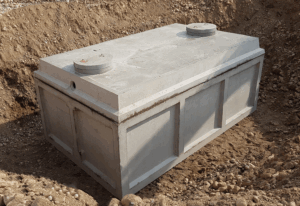Introduction
If you’re a homeowner or property owner, you’ve likely come across the terms “holding tanks” and “septic tanks” when it comes to managing wastewater. While both options serve the purpose of storing and treating waste, they differ in several important aspects. In this article, we’ll delve into the distinctions between holding tanks and septic tanks, including their functionality, maintenance requirements, and environmental impact. By the end of this article, you’ll have a clear understanding of the differences between these two options and be able to make an informed decision for your specific needs.
What are Holding Tanks and Septic Tanks?
Before we dive into the differences, let’s first define what holding tanks and septic tanks are.
Holding Tanks
A holding tank, also known as a storage tank or a cesspool, is a container that temporarily holds wastewater until it can be properly disposed of. Holding tanks are typically made of durable materials such as plastic, fiberglass, or concrete, and they are designed to be watertight to prevent leakage or seepage into the surrounding soil.
Holding tanks do not have any treatment processes, and the waste that enters the tank remains untreated. They are often used in areas where there is no access to a sewer system or a septic system, such as in remote locations or during temporary events. Holding tanks require regular pumping and disposal of the waste by a professional waste management company.
Septic Tanks
A septic tank is an underground container made of concrete, plastic, or fiberglass that is connected to a property’s plumbing system. It is designed to receive, store, and treat wastewater from the household, including toilets, sinks, showers, and laundry. The waste in a septic tank goes through a natural biological process that breaks down solid waste into sludge at the bottom of the tank and allows liquid effluent to flow into the drainfield for further treatment in the soil.
Septic tanks are common in rural areas where there is no access to a municipal sewer system. They require regular maintenance, such as pumping of the accumulated sludge and inspection to ensure proper functioning.
Functionality: How Do Holding Tanks and Septic Tanks Work?
The functionality of holding tanks and septic tanks is one of the key differences between the two options.
Holding Tanks
Holding tanks are designed solely to store wastewater temporarily until it can be disposed of properly. When wastewater enters a holding tank, it remains untreated and does not undergo any treatment processes. The tank simply holds the waste until it is pumped out and disposed of by a professional waste management company.
Holding tanks are relatively simple in design, consisting of an inlet pipe for wastewater to enter and an outlet pipe for the tank to be pumped out. Some holding tanks may also have a vent pipe to release gases generated by the decomposition of waste.
Septic Tanks
Septic tanks, on the other hand, are designed to not only store wastewater but also treat it before it is discharged into the environment. When wastewater enters a septic tank, it undergoes a natural biological process that involves the separation of solid waste from liquid effluent.
The solid waste, also known as sludge, settles at the bottom of the tank, while the liquid effluent, which contains water and dissolved organic matter, flows into the drainfield for further treatment in the soil. The soil acts as a natural filter, removing harmful pathogens and other contaminants from the
liquid effluent before it reaches the groundwater or surface water.
The treatment process in a septic tank involves the action of bacteria and other microorganisms that break down the solid waste into sludge through a process called anaerobic digestion. This process occurs in the absence of oxygen and results in the production of gases, such as methane and carbon dioxide, which are released through the vent pipe of the septic tank.
The liquid effluent that is discharged into the drainfield undergoes further treatment in the soil through a process called aerobic digestion. This involves the action of aerobic bacteria that further break down the organic matter, removing harmful pathogens and reducing the levels of nitrogen and other contaminants in the effluent.
Overall, septic tanks provide a more comprehensive and environmentally-friendly approach to wastewater management compared to holding tanks, as they include a treatment process that helps to reduce the environmental impact of the discharged effluent.
Maintenance Requirements: Holding Tanks vs. Septic Tanks
Another important aspect to consider when comparing holding tanks and septic tanks is the maintenance requirements associated with each option.
Holding Tanks
Holding tanks require regular pumping and disposal of the accumulated waste by a professional waste management company. The frequency of pumping depends on the size of the tank and the amount of wastewater generated, but it typically needs to be done more frequently compared to septic tanks.
In addition to pumping, holding tanks may require periodic cleaning to remove accumulated solids and prevent blockages. It’s essential to follow proper maintenance schedules and guidelines provided by the waste management company to ensure the efficient and safe operation of a holding tank.
Septic Tanks
Septic tanks also require regular maintenance, but the frequency of pumping is generally lower compared to holding tanks. The frequency depends on factors such as the size of the tank, the number of occupants in the household, and the volume of wastewater generated.
On average, septic tanks need to be pumped every 3-5 years, but it’s important to have regular inspections and follow the recommendations of a licensed septic professional. Inspections may include checking the level of sludge and scum in the tank, inspecting the components of the system, and ensuring that the drainfield is functioning properly.
Proper use and care of a septic system, such as avoiding flushing of non-biodegradable items and using water-efficient fixtures, can also help to reduce the frequency of pumping and extend the lifespan of the system.